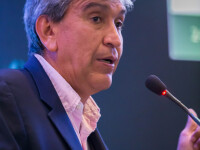September 2022 – The monthly issue of April/May 2022, headlined: Argentina: “Gas Pipeline of Hope” in its decisive hour. We referred to the pompous announcement of the start of construction of the Transport.Ar Gas Pipeline System, in its Stages I and II. I analyzed and celebrated that this would allow the tango country to immediately fully develop Vaca Muerta and stop importing, as from 2023, important quantities of LNG, gas from Bolivia, gas oil and electricity, so that the country does not bleed in dollars, which are extremely scarce.
He also pointed out that this new transportation system would be important to achieve regional exports of natural gas to Chile, Uruguay and border with Brazil with already developed infrastructure and idle capacity. Additionally, the transportation system to be built would allow gas to reach the north of the country, and therefore the north of Chile, the border with Bolivia and from there to reach a deficit market in Brazil, using idle capacity in the Brazilian export pipelines.
All this in an optimal, ingenious and much less costly regional integration, using gas resources of the region and developed infrastructure with idle capacity. This would allow us to stop buying the much demanded and very expensive LNG. However, my dreams, unfortunately, do not match the reality of our countries.
Russia’s invasion of Ukraine has caused a very strong disruption in the global gas market. We are witnessing an accelerated commoditization of natural gas through LNG. The European Union’s decision to stop importing gas from Russia by pipeline and Russia’s decision to cut off supplies is structural in terms of confidence and security of supply.
We can say that it is a definitive goodbye to new investments in pipelines between countries globally and that we will see accelerated investments in new liquefaction plants, new regasification terminals and LNG tankers all over the world. LNG is and will be king in the desired energy transition.
LNG prices will be skyrocketing in the coming years and Argentina, Brazil and Chile must go out and buy this in-demand and very expensive energy in the global market. If we continue to doze off, billions of billions of dollars in the coming decades will flow out of our region to the LNG producing countries and to the companies that carry out the transportation and regasification service.
The sad reality shows that Brazil, with its “New Gas Market” has not accelerated offshore and pre-salt production in particular. Route 3 is delayed and let’s see how long it will take to study and build route 4. Bolivia does not encourage investments and will deliver less and less gas due to its declining production. What a lost opportunity. Of course it will demand gas prices with gas for its declining production and will push to leave behind the fuel oil markers, which no longer reflect market reality. Brazil is praying for a lot of rain because the LNG it buys in the next few years will take its toll.
Investments in Vaca Muerta in exploration to increase supply will only come when the complete infrastructure described above is developed. For now, part of the first phase of development only serves to compensate for declining conventional gas production. Macroeconomic stability does not help at all, with a highly indebted State that does not have the economic resources to build an emergency infrastructure.
Short term projections: In the next winters (2023 and 2024) the “Gasoducto de la Esperanza” will not be in Argentina and the scarce and declining Bolivian gas will be disputed again between Brazil and Argentina. Billions of dollars in LNG imports in the Southern Cone.
I want to be optimistic again and think that, in the medium to long term: Bolivia will encourage exploration to continue exporting gas, stop importing diesel and gasoline and that its Net International Reserves will not continue to fall. Argentina would opt for a change of direction in its economic model and Vaca Muerta would be developed with private infrastructure to reach its domestic market and export to neighboring countries using existing infrastructure. Brazil will finish route 3 and build route 4. Only then we will not import the multi-billion dollars of LNG in the next two decades. In short, dreaming does not cost anything.
*Former Minister of Hydrocarbons of Bolivia and current managing partner of Gas Energy Latin America.





